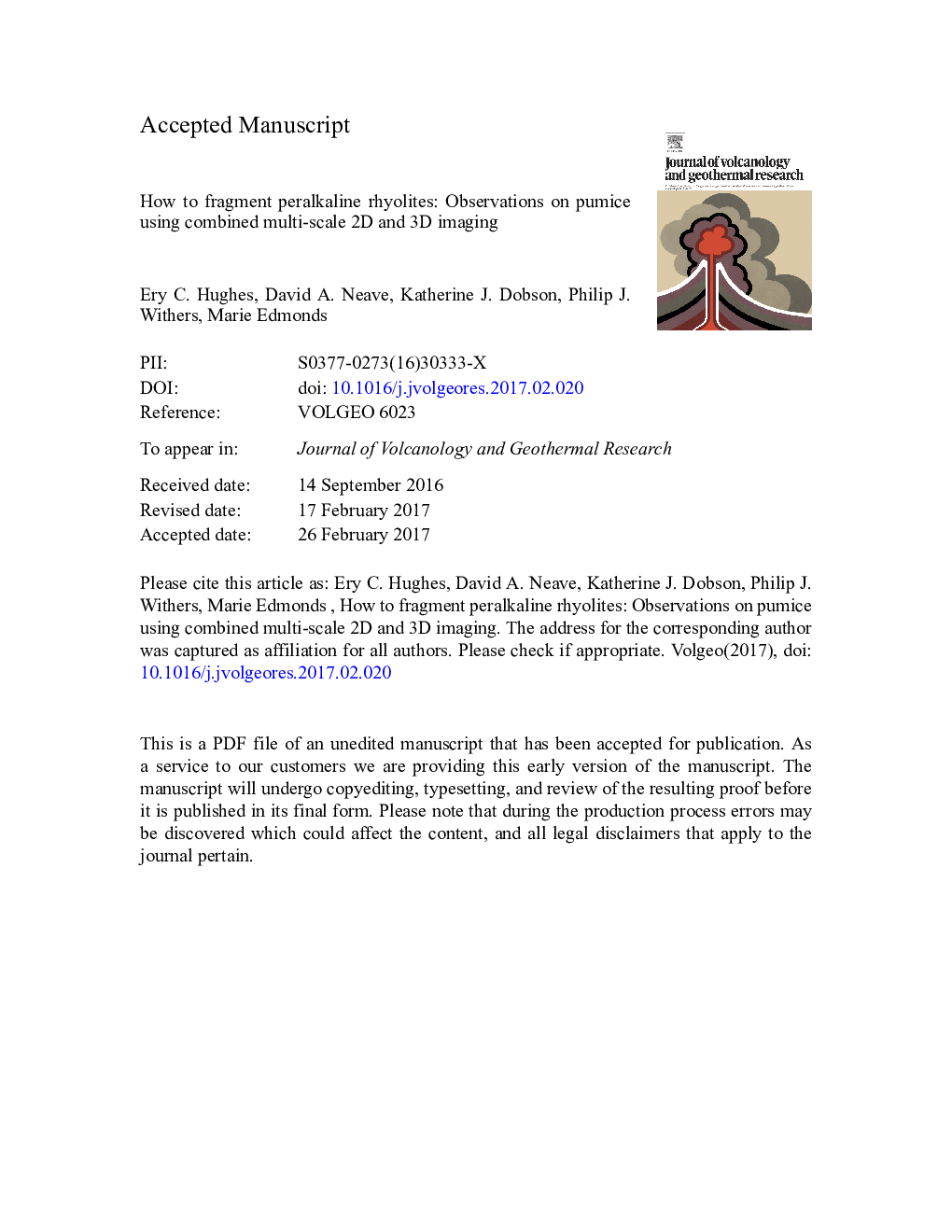| Article ID | Journal | Published Year | Pages | File Type |
|---|---|---|---|---|
| 5783865 | Journal of Volcanology and Geothermal Research | 2017 | 39 Pages |
Abstract
Peralkaline rhyolites are volatile-rich magmas that typically erupt in continental rift settings. The high alkali and halogen content of these magmas results in viscosities two to three orders of magnitude lower than in calc-alkaline rhyolites. Unless extensive microlite crystallisation occurs, the calculated strain rates required for fragmentation are unrealistically high, yet peralkaline pumices from explosive eruptions of varying scales are commonly microlite-free. Here we present a combined 2D scanning electron microscopy and 3D X-ray microtomography study of peralkaline rhyolite vesicle textures designed to investigate fragmentation processes. Microlite-free peralkaline pumice textures from Pantelleria, Italy, strongly resemble those from calc-alkaline rhyolites on both macro and micro scales. These textures imply that the pumices fragmented in a brittle fashion and that their peralkaline chemistry had little direct effect on textural evolution during bubble nucleation and growth. We suggest that the observed pumice textures evolved in response to high decompression rates and that peralkaline rhyolite magmas can fragment when strain localisation and high bubble overpressures develop during rapid ascent.
Keywords
Related Topics
Physical Sciences and Engineering
Earth and Planetary Sciences
Geochemistry and Petrology
Authors
Ery C. Hughes, David A. Neave, Katherine J. Dobson, Philip J. Withers, Marie Edmonds,
